Many of the local New Jersey Cretaceous streams boast some truly
impressive fossil oyster beds. These large shells are composed of
calcite, a relatively stable form of calcium carbonate (see the
aragonite dissolution discussion) which is resistant to dissolution from
the acidic ground water and most have retained their original shell
material. (Richards et al, 1962)
lists three genus of oysters reported from New Jersey.
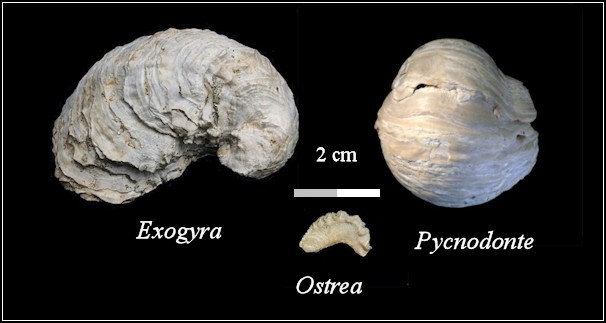
3
genus of oyster are found in New Jersey.
The genus Gryphaea is now Pycnodonte but older
reference material will use
Gryphaea.
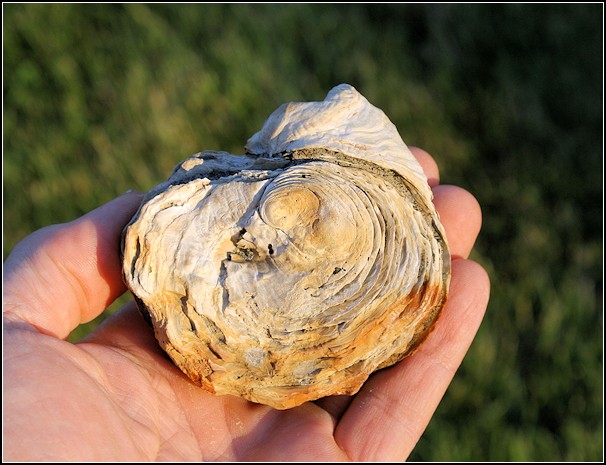
The valves on oysters are uneven and referred to as the
right and left valves.
Typically, the right valve of an oyster will be shorter
and less concave than the left.
An example of the right valve on
Exogyra.
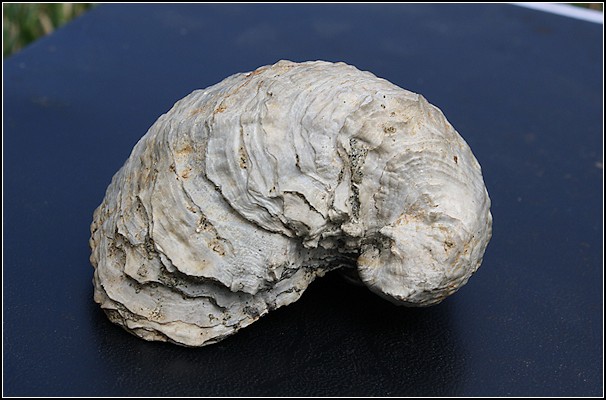
Exogyra sp.
The genus Exogyra is distinguished from Pycnodonte and
Ostrea chiefly by it's spirally
curved peak.
Monmouth County, NJ
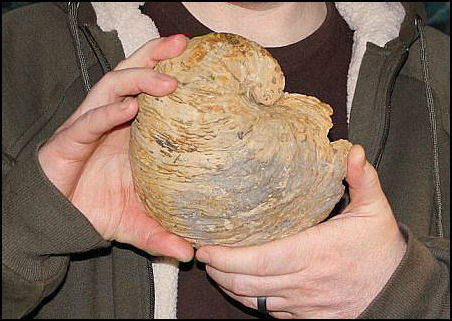
Robert Badger with a large Exogyra shell.
MAPS Collection
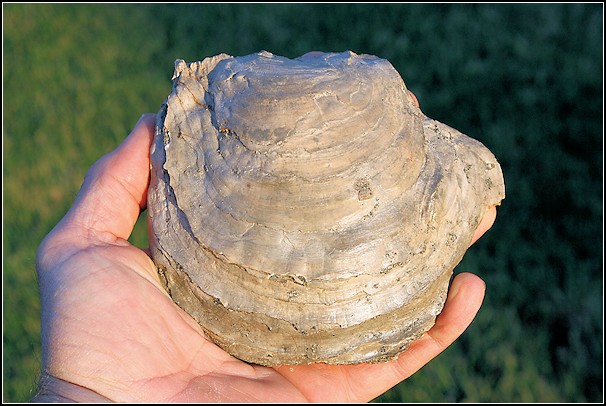
Pycnodonte sp.
Like Exogyra, Pycnodonte is a large shell, but has an almost
circular shell outline
and a nearly smooth shell surface.
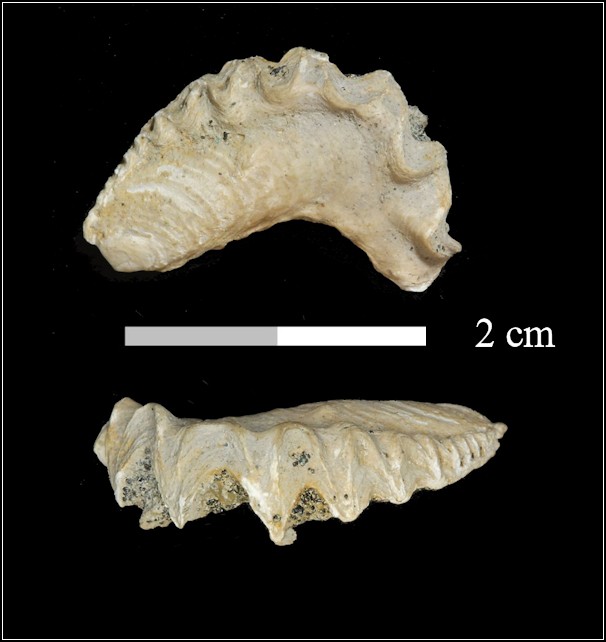
Ostrea sp.
This is by far the smallest of the three species.
Ostrea has a weak “U” shape and scalloped edge.
References and notes:
Exogyra and Pycnodonte formed vast
oyster beds in a continuous belt parallel to the Cretaceous coastline.
This belt starts at New Jersey, runs down to Georgia, over to Texas and
up to Kansas.
Richards, H. G., 1962. The Cretaceous fossils of New
Jersey (Part 2). New Jersey Dept. of Conservation and Economic
Development. New Jersey Geology Survey Bulletin, vol. 61, 237 p.
Wade, B., 1926. The fauna of the Ripley Formation on Coon Creek,
Tennessee. U.S. Geological Survey, Professional Paper no. 137, 272 p.,
72 pl.





